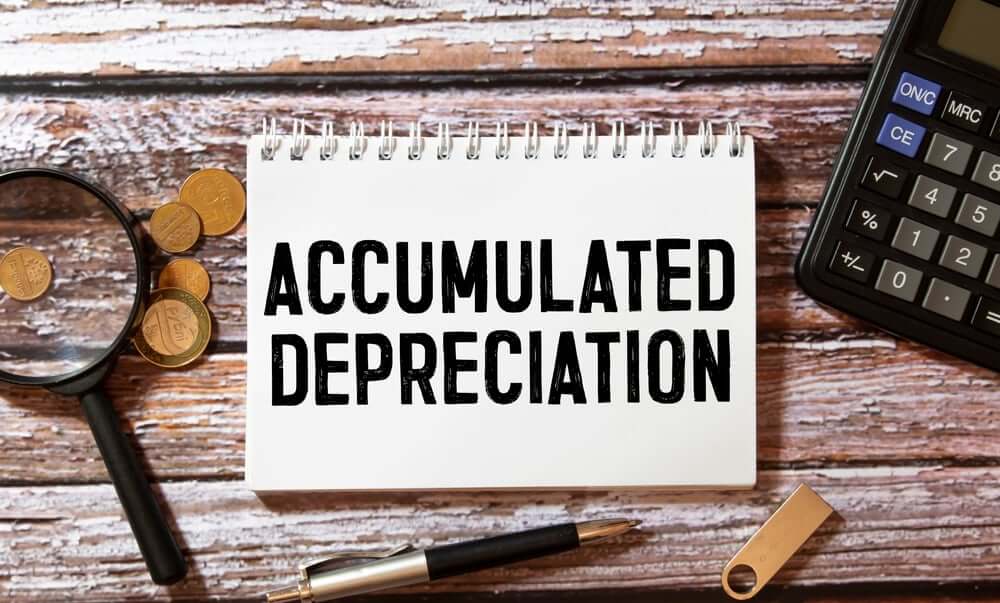What is accumulated depreciation and how to calculate it?
Key Takeaways:
Accumulated depreciation is crucial for understanding how assets lose value over time, aiding in financial planning.
Businesses rely on it to determine asset replacement timing and budgeting, considering asset lifespan and value.
Various methods of calculating accumulated depreciation, such as straight-line and production units, impact its presentation in financial reports.
Understanding this kind of depreciation is essential for assessing a company’s financial status and planning ahead.
Have you ever pondered accumulated depreciation and how to calculate it effectively? Accumulated depreciation is a crucial accounting measure for evaluating the depreciation of tangible assets over some time.
Refining how businesses report asset depreciation enhances financial transparency and improves the effectiveness of data for predictive analysis.
Knowing how asset depreciation works is important for making smart choices. It helps you understand the value of assets and how it affects yearly expenses and asset records.
Let’s get more information about it and how to calculate it, shall we?
Understanding accumulated depreciation
Assets lose value over time. When a company gets them, they’re given a value based on how long they’re expected to last. This value goes down as time goes on.
In essence, accumulated depreciation represents the total amount of these depreciations accumulated until the current period.
This information is crucial for assessing the value of an asset and impacts financial reports and tax calculations.
How does accumulated depreciation function in practice?
When a company buys something, it writes down its starting value, how long it’ll be used, and its salvage value. As the thing loses value, the company writes down accumulated depreciation in its ledger.
They often use methods like straight-line depreciation to track this value decrease over time.
Accumulated depreciation shows how much an asset’s value has decreased over time, providing insight into its current financial status.
Companies commonly use accumulated depreciation to accurately track the finances of assets like vehicles, machinery, computers, buildings, office equipment, and furniture.
Significance of Tracking Accumulated Depreciation
Keeping an eye on accumulated depreciation is crucial because it shows how much significant assets are worth financially. This helps plan for the future and makes business planning easier.
This particular depreciation helps determine when to replace assets and budget for replacements, considering their resale value.
Clear financial records improve understanding of a company’s overall health. Spreading out asset costs over time prevents profits from decreasing too much in the year of purchase.
Conversely, accelerating the depreciation of assets can lower taxes in a business’s early years.
How do accountants compute accumulated depreciation?
When you study accounting, you’ll find methods to calculate accumulated depreciation. These methods distribute the asset’s cost over its useful life. They encompass the straight-line, diminishing, and double-declining techniques.
The straight-line method calculates yearly depreciation. It does this by subtracting the salvage value from the asset’s cost. Then, it divides this result by the asset’s useful life.
This calculation gives you the annual depreciation. Summing these amounts provides the total compiled depreciation over the asset’s period of use.
What is this approach like?
This method helps businesses align costs with the useful life of their assets, aiding financial planning.
Using units of production or a depreciation schedule can track asset use during an accounting period. It offers a more accurate calculation of depreciation, often listed in financial statements to show the asset’s financial effect.
What is the yearly accumulated depreciation formula?
The formula for calculating yearly depreciation using this method is:
Annual depreciation = (Initial asset cost – Salvage value) / Expected years of use
Consequently, accumulated depreciation equals the annual depreciation multiplied by the years the asset has been operational.
Example of the straight-line method:
Imagine your company buying office equipment for $200,000. After 8 years of use, we expect it to be worth $80,000.
Annual depreciation is $120,000 divided by 8 years, yielding $15,000 annually.
Therefore, four years after acquiring the equipment, accumulated depreciation reaches:
Four years multiplied by $15,000 equals $60,000.
At this point, the asset value is $200,000 minus $60,000, resulting in $140,000.
Exploring the Diminishing and Double Diminishing Techniques
Assets lose value over time.
They speed up how fast assets lose value in the early years.
The IRS rules Modified Accelerated Cost Recovery System (MACRS) depreciation. Every year, assets lose less value.
Machines, vehicles, computers, furniture, and buildings can get this kind of depreciation. Each has a specific time for how long it can lose value, set by the IRS.
Navigating Depreciation: A Simple Comparison
Depreciation expense represents the gradual decrease in an asset’s value over time, diminishing gradually throughout its life.
In contrast, accumulated depreciation comprises the sum of these annual depreciation expenses, impacting the asset accounts.
This total affects financial records, balance sheets, and taxes, showing how much the asset’s value has decreased.
Deciding how much money a company keeps involves changing asset values, financial reports, and taxes.
Understanding Proration’s Influence on Asset Depreciation Reporting
Proration adjusts depreciation claims based on the asset’s ownership period, affecting financial statements and tax implications.
For instance, purchasing an asset mid-year reduces its yearly depreciation claim.
How is accumulated depreciation categorized on the balance sheet?
Accumulated depreciation, a negative asset listed on balance sheets, decreases the value of the corresponding asset.
When you check the asset ledger, you’ll see the original purchase cost and the compiled depreciation.
We calculate the asset’s net worth by subtracting the accumulated depreciation from the original cost. This change affects retained earnings by adjusting the net value of assets in the accounts.
This type of depreciation is shown under fixed assets on the balance sheet, indicating the asset’s decrease in value. This reduction is often due to methods like straight-line depreciation and the asset’s useful life.
Bottom line
Understanding accumulated depreciation is important for managing assets and planning for the future. Tracking depreciation helps make decisions about replacing assets and budgeting.
Different methods of calculation help keep finances clear. Financial statements show this type of depreciation, making it easy to see how assets affect finances.
In the end, understanding accumulated depreciation helps keep finances stable and ensures long-term success.
The post What is accumulated depreciation and how to calculate it? appeared first on FinanceBrokerage.




























